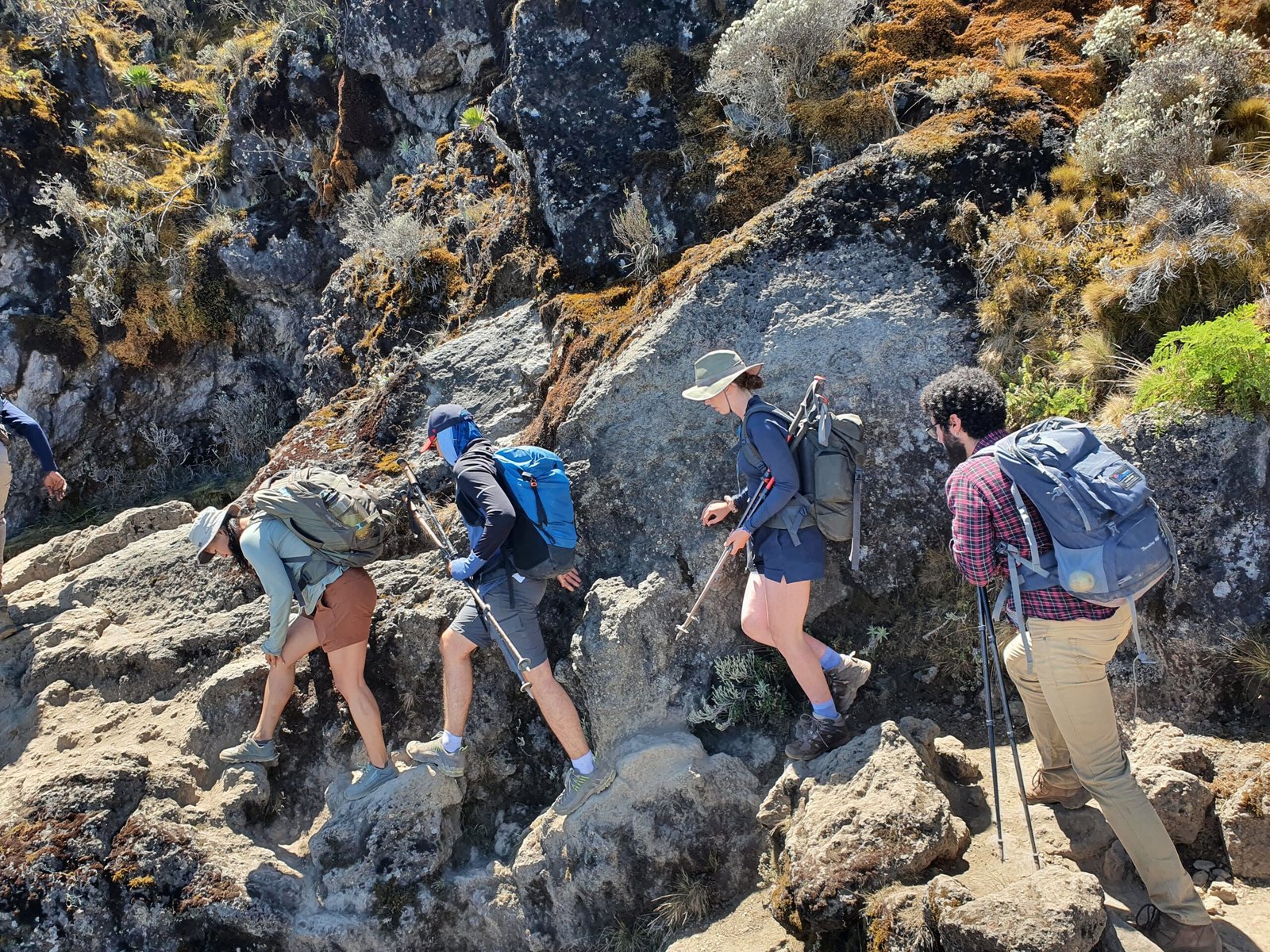All about the best Kilimanjaro’s Climbing/Hike in 6-Days Marangu 2025-2026
All about the best Kilimanjaro’s Climbing/Hike in 6-Days Marangu 2025-2026 , Mount Kilimanjaro, standing majestically at 5,895 meters (19,341 feet), is the highest peak in Africa and one of the most sought-after trekking destinations worldwide. Among the various routes to its summit, the Marangu route offers a unique blend of scenic beauty and relative comfort with hut accommodations. Known as the “Coca-Cola Route,” it is ideal for those who prefer a shorter yet well-paced itinerary. The 6-day Marangu route is particularly recommended for those looking to maximize their chances of reaching the summit through better acclimatization. This guide covers everything you need to know about climbing Kilimanjaro on the 6-day Marangu route in 2025-2026.

Why the Marangu Route is Popular for a 6-Day Climb
The 6-day Marangu route is a great choice for trekkers due to its combination of moderate difficulty and comfortable accommodations in huts. It is the only route with dormitory-style huts, which is a draw for those who want to avoid camping in tents. The additional acclimatization day at Horombo Hut increases the chances of a successful summit and helps climbers adapt to the altitude. This makes the 6-day option a safer and more enjoyable choice for many.
Detailed 6-Day Marangu Route Itinerary for 2025-2026
The 6-day Marangu itinerary is designed to allow for proper acclimatization and a balanced trek. Here is a breakdown of what to expect each day:
Day 1: Moshi to Marangu Gate, hike to Mandara Hut.
Day 2: Hike from Mandara Hut to Horombo Hut.
Day 3: Acclimatization day at Horombo Hut, with optional hikes.
Day 4: Trek from Horombo Hut to Kibo Hut.
Day 5: Summit push to Uhuru Peak, followed by descent to Horombo Hut.
Day 6: Descend from Horombo Hut to Marangu Gate and return to Moshi.
All about the best Kilimanjaro’s Climbing/Hike in 6-Days Marangu 2025-2026 : Day By day itinerary
Day 1: Moshi to Marangu Gate, Hike to Mandara Hut
Your Kilimanjaro adventure begins with a drive from Moshi to Marangu Gate (1,870 meters). After registering and meeting your guide and porters, the hike through the lush rainforest leads to Mandara Hut (2,720 meters). This 7 km (4.3 miles) trek takes about 4-5 hours, introducing climbers to the rich biodiversity of the mountain.
Day 2: Mandara Hut to Horombo Hut
From Mandara Hut, the journey continues through moorland to Horombo Hut (3,720 meters). This 12 km (7.5 miles) hike takes about 6-8 hours. As you climb, the vegetation changes dramatically, offering views of exotic plants like the giant lobelia. The day ends with a warm meal and stunning views at Horombo Hut.
Day 3: Acclimatization Day at Horombo Hut
An extra day at Horombo Hut is crucial for adjusting to the altitude. Many climbers take a short hike to Zebra Rocks (about 4,000 meters) to further prepare their bodies. This day increases the likelihood of a successful summit and helps reduce the risk of altitude sickness.
Day 4: Horombo Hut to Kibo Hut
Day 4 involves a 10 km (6.2 miles) trek from Horombo to Kibo Hut (4,703 meters). The landscape shifts to an alpine desert, with the path crossing the “Saddle” between Kibo and Mawenzi peaks. This part of the hike can be challenging due to the thin air, but the anticipation of the summit keeps spirits high.
Day 5: Summit Day – Kibo Hut to Uhuru Peak and Descend to Horombo Hut
Summit day starts just after midnight, with a demanding trek to Gilman’s Point (5,685 meters), then onward to Uhuru Peak. The climb is steep and strenuous, but the sight of sunrise from the “Roof of Africa” is unforgettable. After reaching the summit, climbers make the long descent back to Horombo Hut, covering over 21 km (13 miles) in total.
Day 6: Horombo Hut to Marangu Gate and Return to Moshi
The final descent from Horombo Hut to Marangu Gate covers 19 km (12 miles), taking about 5-7 hours. The trail leads back through the lush forest, offering a chance to reflect on the incredible journey. At the gate, climbers receive certificates of achievement before returning to Moshi for a well-deserved rest.
Package Inclusion & Exclusions
Inclusion
- Guide, Porters
- Park Fees, Tax
- Gate transfer
- Crew wages
- Environment fees
- During the climb you will be camping throughout you climb!
- Breakfasts, Lunches, Dinners
- Drinking water
- Cook
Exclusion
- Flights
- Tipping the crew
- Visas
Essential Gear and Equipment for the 6-Day Marangu Climb
Preparing for the varying weather conditions on Kilimanjaro is key to a comfortable climb. Important items include:
Clothing: Layered thermal wear, waterproof jackets, and gloves.
Footwear: High-quality hiking boots and extra socks.
Gear: Trekking poles, headlamp (for summit night), and a sleeping bag rated for sub-zero temperatures.
Most gear can be rented in Moshi, but it’s wise to bring personal clothing and boots to ensure proper fit and comfort.
Costs and Budget for the 6-Day Marangu Hike in 2025-2026
The cost of a 6-day Marangu climb varies depending on the tour operator, ranging from $1,800 to $3,000 per person. This includes park fees, guide and porter fees, meals, and accommodation in the huts. Travelers should also budget for tips (typically $200-$300), gear rental, and any additional costs for stays in Moshi before and after the trek.

